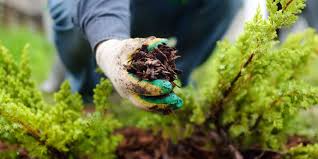Proper tree fertilization is essential for maintaining tree health and encouraging robust growth. However, many gardeners make the common mistake of applying fertilizer improperly, which can lead to wasted resources and even harm the tree. This guide provides detailed, actionable steps to ensure trees receive the nutrients they need for optimal growth while minimizing risks.
Understanding Tree Roots
Before fertilizing, it’s crucial to grasp the structure of a tree’s root system. Most of a tree’s absorbing roots, including fine root hairs essential for nutrient uptake, are located not at the base of the trunk but extend outward beneath the canopy, often reaching beyond the drip line. Targeting this area is key to effective fertilization.
Step 1: Assess the Need for Fertilization
- Conduct a Soil Test:
Start by testing the soil to identify nutrient deficiencies. This ensures you select the right fertilizer tailored to your tree’s needs. - Observe the Tree:
Look for signs of nutrient deficiency, such as:
- Discolored or yellowing leaves
- Stunted or slow growth
- Premature leaf drop

Step 2: Select the Right Fertilizer
- Choose the Type:
Opt for a slow-release, granular fertilizer. This allows nutrients to be absorbed over time, reducing the risk of over-fertilization. - Check the Formula:
A balanced N-P-K (Nitrogen-Phosphorus-Potassium) ratio is usually ideal unless the soil test suggests otherwise. For instance:
- Nitrogen (N): Promotes leafy growth
- Phosphorus (P): Supports root development
- Potassium (K): Enhances overall tree health and disease resistance
Step 3: Apply Fertilizer Correctly
- Location Matters:
- Distribute fertilizer under the tree’s canopy and slightly beyond the drip line, where absorbing roots are most active.
- Avoid applying fertilizer near the trunk to prevent root damage.
- Application Techniques:
- Broadcast Method: Evenly spread granules over the soil within the root zone.
- Fertilizer Wells: Create shallow wells (4-6 inches deep) around the drip line to deliver nutrients directly to the root zone.
- Water Thoroughly:
After fertilizing, water the area to help nutrients penetrate the soil. Avoid water pooling near the trunk, as this can cause rot.
Additional Tree Care Tips
- Watering Best Practices:
- Divert water away from the trunk using mulch or a dirt barrier.
- Ensure proper soil drainage to prevent root rot.
- During hot or dry conditions, water in smaller, frequent installments to avoid overhydration.
- Enhance Oxygen Levels:
Add small amounts of hydrogen peroxide to irrigation water to improve soil oxygenation and support root health.
Nurturing Trees for Long-Term Vitality
Tree fertilization is about more than supplying nutrients—it’s about delivering them in a way that supports the tree’s natural processes. By understanding the root system, using the appropriate fertilizer, and applying it correctly, gardeners can create a thriving, sustainable environment for their trees. Thoughtful fertilization not only improves growth but also strengthens the tree’s resilience, ensuring beauty and health for years to come.
